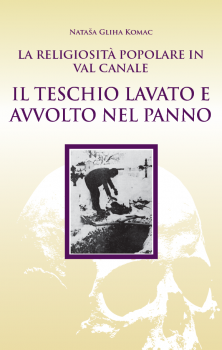La religiosità popolare in Val Canale. Il teschio lavato e avvolto nel panno
Monografija prinaša pregled ljudskega obredja prebivalstva Kanalske doline, ki ga avtorica prepoznava kot pomemben identifikacijski element tamkajšnje slovenske jezikovne skupnosti. Posebna pozornost je namenjena še v začetku 21. stoletja živemu obrednemu »umivanju in zavijanju lobanje zadnjega pokopanega pokojnika«, o katerega razširjenosti med Slovenci so v preteklosti pisali že E. Gasparini (1952), M. Matičetov (1955) in H. Maister (1975), zapisi o prisotnosti tovrstnega obrednega umivanja v Srbiji in Makedoniji (E. Schneeweis 1935) pa namigujejo na morebitno vezanost obredja na širši južnoslovanski prostor. Gre za dopolnjeno različico slovenske monografije iz leta 2014.
Soizdajatelja: Slovenski raziskovalni inštitut (SLORI) / Instituto sloveno di ricerche (SLORI); Slovensko kulturno središče Planika Kanalska dolina (S.k.s. Planika) / Centro Culturale Slovene Stella Alpina Val Canale
Prenosi

Zbirka
Inštitut
Licenca

To delo je licencirano pod Creative Commons Priznanje avtorstva-Nekomercialno-Brez predelav 4.0 mednarodno licenco.
